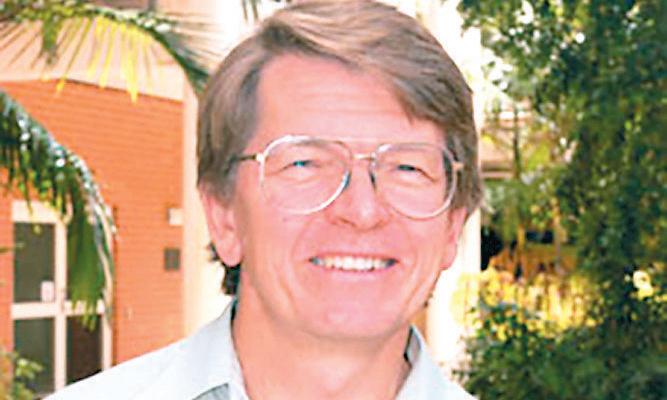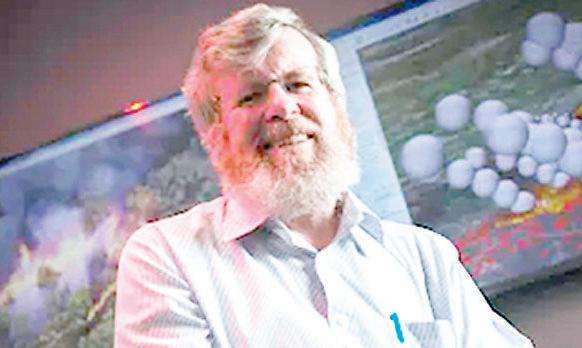
4 minute read
Who is the tennis star that has returned to play in the Australian Open after being deported last year?
Harvesting ‘no bushfire impact’
Comment Prof Kevin Tolhurst Prof Jerry Vanclay
SOME ecologists and conservationists, opposed to timber harvesting, are trying to use bushfire disasters as a lever to stop native forest harvesting, but their case is based on opinion, beliefs and selective science. A 2016 study of over 1 million hectares burnt by wildfire in the 2003 fires in Victoria, showed that fire severity across the landscape was driven by weather conditions, slope aspect, fuel levels, atmospheric stability, and the scale of the fires. There was no discernible impact of timber harvesting on fire severity at the landscape scale. Scientists suggesting that timber harvesting leads to more severe fires are basing their conclusions on selective, local-scale observations where the only variable being considered is the time since harvesting. This is poor science as it is well established that several factors lead to fire severity. A landscape scale study of fire severity published in 2014 based on an analysis of over 2 million hectares burnt in Victoria in 2003 and 2007, shows that there is no significant difference between fire severity in parks compared with forests (including timber harvesting areas). Fire severity does change with time after timber harvesting (both up and down), but if the whole harvested landscape is considered rather than just isolated local areas, then the conclusion that timber harvesting increases bushfire risk and severity cannot be supported by the evidence. Science differs from opinion in that it relies on an objective procedure
Professor Jerry Vanclay. Professor Kevin Tolhurst.

Photos: Contributed
informed by a hypothesis confirmed with reliable evidence, often in the form of experimental data. It is not possible to conduct wildfire experiments at a landscape scale, so we rely on opportunistic events and try to account for the range of all contributing factors. Some literature reviews attempt to draw conclusions from published reports, but such reviews can be problematic - firstly because some of the publications cited may only be marginally relevant; and secondly, because reviews may be prone to inadvertent bias (i.e. a search for “logging and fire” will not locate reports where a logging was not followed by a fire, or where fire occurred in the absence of logging). The problem is further compounded when reviews attempt to synthesise from a diverse range of forests which vary greatly in their flammability and their response to disturbance. These three issues mean that most reviews of possible links between harvesting and flammability are unreliable, and the conclusions drawn may not accurately reflect the evidence. Science progresses by setting and testing hypotheses. So what factors can guide the formulation of useful hypotheses? Harvesting creates roads, and in some developing countries these roads enable access for squatters to clear land by burning - but this is not evident in Australia, where roads may assist fire-fighting efforts. Harvesting creates woody debris, and could contribute to fuel levels in the short term, but the effect is localised and seems unlikely to influence the behaviour of major fires. Harvesting changes the age structure of a forest, but so too does high severity fires. Rather than focussing on timber harvesting as a cause of severe bushfires, we would be better served by looking at the long-term fire management in forested landscapes in parks, forests and private land. We should also be looking at the impacts of climate change on increasing fire severity. And we should be looking at how to increase a workforce with bush skills and knowledge to manage our forests and rangelands in a professional way. For decades, the timber industry has provided an important sources of bush skills and knowledge as people’s livelihood has depended on good and sustainable management. Timber harvesting from native eucalypt forests in Australia comes from a very small percentage of the landscape: Australia has 101 million ha of native eucalypt forest, of which 5 million hectares is zoned for timber harvesting, and 78,000 ha is harvested in any year (about 0.1 per cent of the total and two per cent of the harvestable area; (https://www.agriculture. gov.au/abares/forestsaustralia/ australias-forests.) Harvesting from this small area supports a significant proportion of the bushfire fighting workforce and fire management resources. Closing down native forest timber harvesting is likely to have a much greater impact on increasing bushfire severity and extent across the landscape than the increase in local fire severity claimed by the opponents of timber harvesting. A holistic, long-term and professional view of forest and fire management is needed rather than short-termed, single-issue perspectives.
Honorary Associate Professor Kevin Tolhurst AM, Fire Ecology and Management, University of Melbourne and Professor Jerry Vanclay, Sustainable Forestry, Southern Cross University
Same-day *Jewellery Repair s

Drop off jewellery before you shop and pick up after you’ve finished

OVER 35 YEARS EXPERIENCE


ER


& CO


Same-day lleryJewel Repairs* Your Local Jew erelle





425 Raymond Street, Sale










